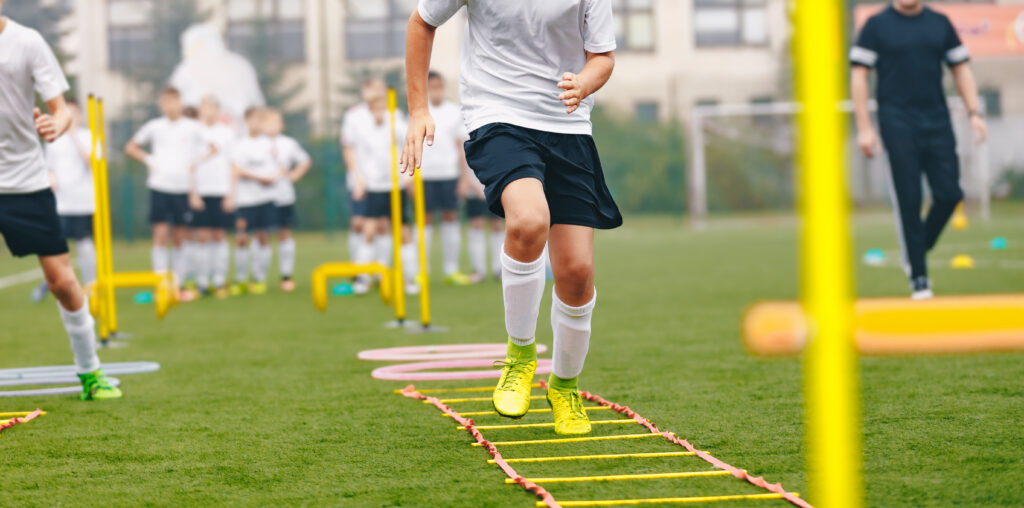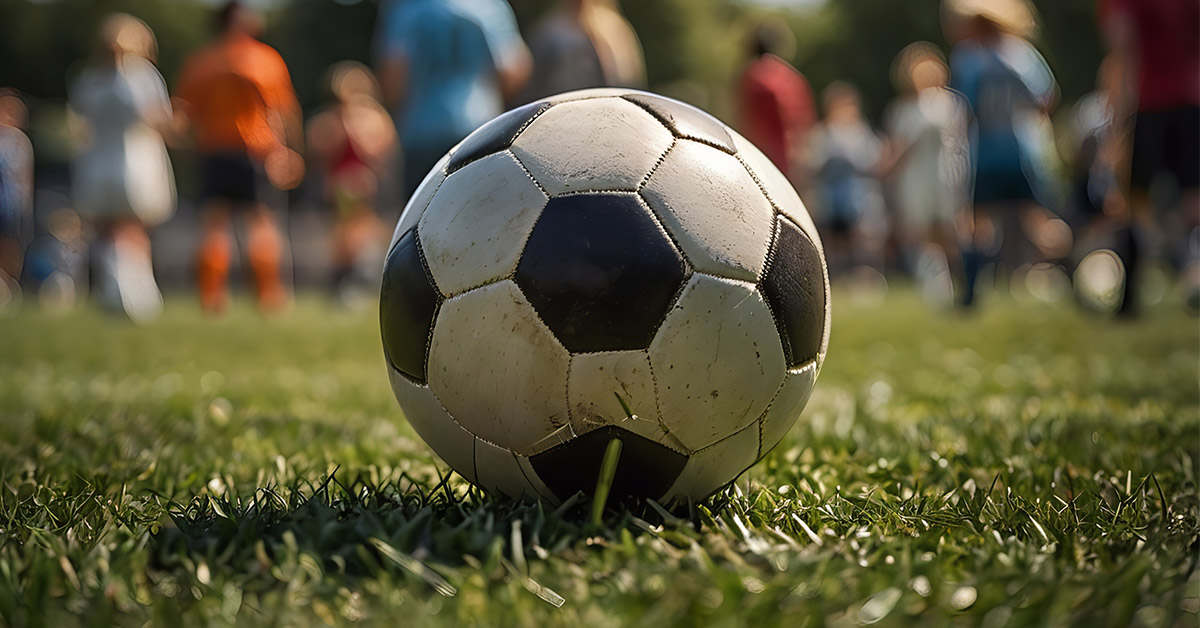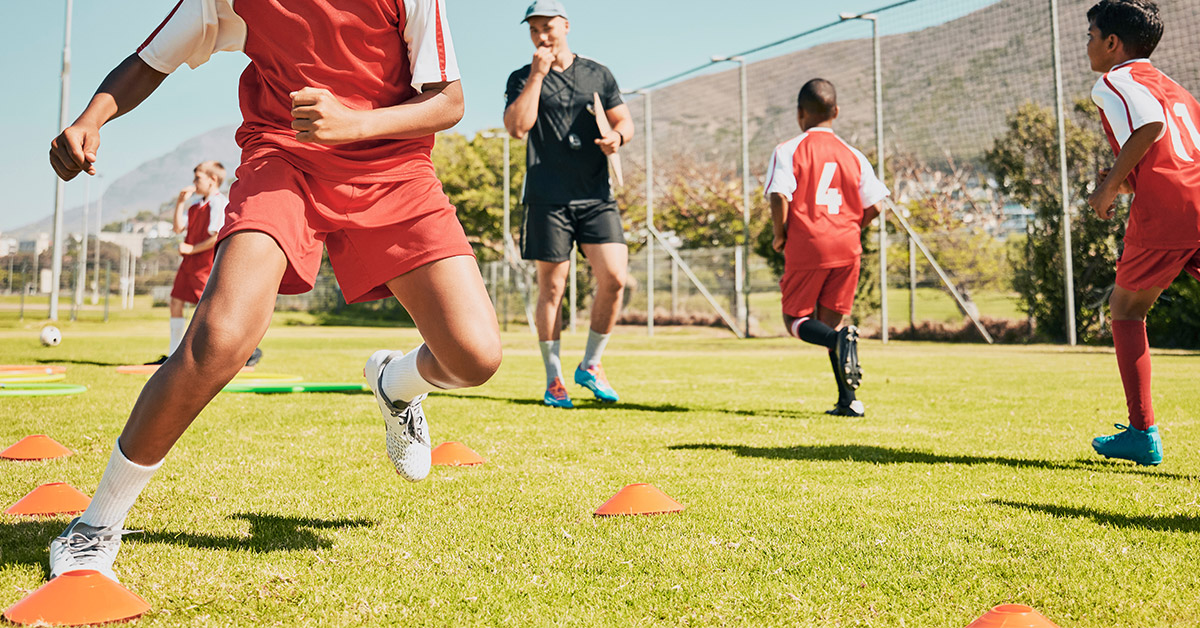
Fitness & Conditioning
Introduction
Soccer is a dynamic sport that requires players to be at a peak physical fitness to perform at their best. Unlike other sports that have frequent stoppages, soccer demands constant movement , quick bursts of speed, sharp changes in direction, and sustained endurance throughout the full 90 minutes of a match. A well conditioned player will not only outlast opponents but also maintain technical precision, tactical awareness, and mental sharpness deep into the game
Fitness training for soccer goes beyond just running long distances- it involves a combination of endurance, strength, speed, agility, and flexibility. The best players are those who can sprint past defenders, recover quickly, shield the ball effectively, and maintain their performance under fatigue. Proper fitness and conditioning improve not only physical capabilities but also reduce the risk of injury, allowing players to train and compete consistently without setbacks
Soccer requires a mix of endurance, agility and explosive speed. A well rounded fitness routine helps players perform at their best for the full 90 minutes. Here’s a structured workout plan to boost stamina, agility, and overall fitness
Fitness Drills

Interval Sprint Training
- Why its important: Soccer is a game of explosive movements and quick transitions. Interval sprinting mimics the bursts of speed needed during matches. Here is a Drill Setup:
- Mark out a 30 yard distance
- Sprint to the marker, jog back, and repeat
- Rest 30 seconds between sets
- Reps: 6 sprints per set, 3 sets total
- Progression: Increase the sprint distance gradually or decrease rest time to improve endurance and speed
Agility Ladder Drills (Quick Feet & Coordination)
- Why it’s important: Quick changes in direction and rapid foot movement are essential for dribbling, defending, and reacting to opponents. Here is a Drill Setup: Use an agility ladder and perform different movements
- In & Out Drill– Step in and out of each box as fast as possible
- Lateral Shuffle– Move sideways through the ladder while staying light on your feet
- Single Foot Hops– Hop through each box on one foot, alternating legs
- Reps: 3 rounds of each drill
- Progression: Perform the drills with a soccer ball at your feet to simulate game conditions
Strength & Power Training (Explosiveness & Injury Prevention)
- Why it’s important: Stronger players can hold off defenders, win physical battles, and generate more powerin their shots
- Key Exercises:
- Squats (Leg Power): 3 sets of 12 reps
- Lunges (Balance & Strength): 3 sets of 10 reps per leg
- Box Jumps (Explosiveness): 3 sets of 8 reps
- Core Work (Stability & Strength): Planks, Russian twists, and leg raises (30 seconds per exercise)
- Progression: Add weights or resistance bands to increase difficulty and build more muscle endurance
Endurance Circuit for Soccer Players
- A soccer player’s endurance needs to last through 90 minutes of constant movement. This circuit enhances cardiovascular fitness while incorporating functional soccer movements.
- Perform the following exercises back to back for a full body workout
- Jumping Lunges– 30 seconds (builds leg strength and power)
- Burpees– 30 seconds (increases stamina and explosiveness)
- High Knees– 30 seconds (improve quick foot movement and endurance)
- Mountain Climbers– 30 seconds (engages core enhances cardiovascular fitness)
- Repeat: 3 full rounds with 1 minute rest between rounds
- Progression: Increase duration to 45 seconds per exercise or add an extra round to challenge endurance
- Perform the following exercises back to back for a full body workout
By consistently incorporating these fitness drills into your routine, you’ll enhance your strength, speed, and stamina-giving you the endurance needed to outplay your opponents on the field!
Recovery & Nutrition Tips
Hydration & Nutrition
Maintaining the right balance of fluids and nutrients is crucial for peak performance. Soccer players lose a significant amount of water through sweat, which can lead to fatigue and muscle cramps if not replenished.
- Hydration: Aim to drink at least 2-3 liters of water daily, and increase intake on training days. Consider electrolyte drinks if engaging in intense workouts or playing in hot weather
- Pre-Game Nutrition: Eat a carbohydrate rich meal (whole grains, fruits, and vegetables) 2-23 hours before training for sustained energy
- Post-Game Recovery: Refuel with protein-packed foods (chicken, eggs, Greek Yogurt) within 30-45 minutes of finishing a session to aid muscle recovery

Stretching & Mobility Work
Flexibility and mobility exercises help prevent injuries and improve movement efficiency. Soccer players rely on explosive movements, which can put strain on muscles and joints if not properly warmed up and stretched
- Dynamic stretches (before training): Activates muscles and prepares the body for movement. Try leg swings, arm circles, hip openers, and high knees
- Static stretching (after training): Helps lengthen tight muscles and improve recovery. Hold stretches like hamstring stretches, quad stretches, and calf stretches for 20-30 seconds each
- Foam Rolling: A great tool for relieving muscle tightness and improving blood circulation. Use it on your quads, hamstrings, calves, and lower back after intense sessions
Rest & Recovery

Training had is important, but giving your body enough time to rest is essential for long term progress. Overtraining can lead to fatigue, decreased performance, and increased risk of injury.
- Sleep: Aim for 7-9 hours of quality sleep each night to allow muscles to repair and grow
- Active Recovery Days: Instead of completely stopping activity, engage in light exercises like yoga, swimming, or walking to keep blood flowing without overexerting yourself
- Listen to Your Body: If you’re feeling excessively sore or fatigued, take a break or modify your workouts to prevent burnout
By incorporating these recovery techniques into your routine, you’ll maximize your training results and stay in top condition for every game!
Why Fitness Matters in Soccer
Soccer is one of the most physically demanding sports, requiring players to have a combination of endurance, strength, agility, and speed. Unlike other sports where there are frequent stoppages, soccer involves continuous movement, meaning players must maintain high levels of fitness to perform effectively for the entire match. Here’s why fitness is crucial for soccer players:
- Endurance for 90 Minutes: Players cover an average of 6-10 miles per game, requiring a high level of cardiovascular fitness to sustain energy levels and avoid fatigue
- Explosive Speed & Acceleration: Sprinting ability is vital for beating defenders, making runs, and closing down opponents. Speed training enhances a player’s ability to react quickly in high pressure situations
- Agility & Quick Direction Changes: Soccer involves constant changes in direction, dribbling past defenders, and tracking opposing players. Agility drills improve coordination and reaction time, allowing players to move efficiently on the field
- Strength for Physical Battles: Whether shielding the ball, winning aerial duels, or tackling an opponent, strength plays a major role in staying competitive during physical challenges.
- Injury Prevention & Recovery: A strong, well conditioned body is less prone to injuries. Proper fitness training, combined with mobility work and recovery routines, helps reduce the risk of muscle strains, ligament tears, and fatigue related injuries
- Mental Toughness & Focus: Fatigue can lead to poor decision making. A well conditioned player is not only physically capable but also mentally sharp, allowing them to stay focused and make quick decision throughout the game
By incorporating these drills and workouts into your routine, you’ll see significant improvements in your dribbling, passing, and overall fitness. Consistency is key! Keep practicing, track your progress, and most importantly have fun on the field!


